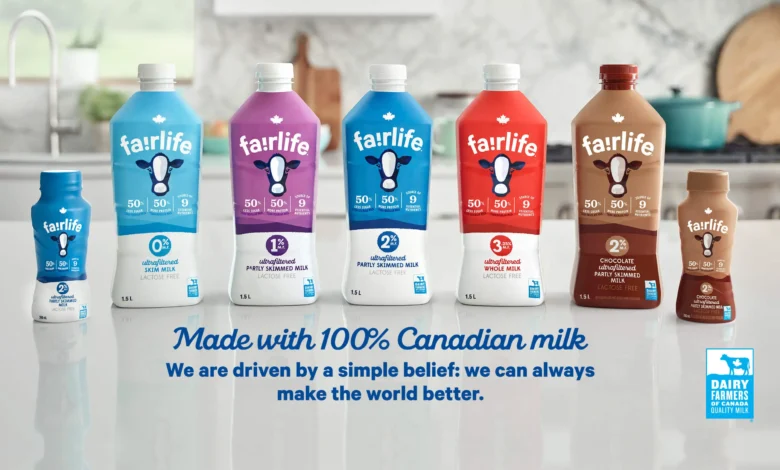Fairlife Milk vs Traditional Dairy: Which is Better for You?

Welcome to the dairy dilemma! With shelves overflowing with milk options, choosing what’s best for your health can be a challenge. In a world where almond, soy, and oat milk are gaining popularity, there’s one contender shaking up the traditional dairy scene – Fairlife milk. But is it just a passing trend or a game-changer in the dairy industry? Let’s dive into the creamy world of Fairlife versus traditional dairy to uncover which option reigns supreme for your well-being.
Overview of the dairy industry
The dairy industry is a diverse and complex landscape that plays a significant role in our diets. From the classic cow’s milk to alternative options like goat and sheep milk, there’s no shortage of choices when it comes to getting your daily dairy fix.
Traditional dairy products have long been a staple in households worldwide, providing essential nutrients like calcium, protein, and vitamins. However, with changing consumer preferences and dietary needs, the industry has seen a shift towards plant-based alternatives such as almond, soy, and coconut milk.
Despite this growing trend towards non-dairy options, traditional dairy continues to hold its ground with innovations like Fairlife milk. With advancements in technology and production methods, brands like Fairlife are revolutionizing the way we think about dairy consumption.
As consumers become more conscious of their health and environmental impact, the dairy industry is adapting to meet these evolving demands while still delivering on taste and nutritional value.
The rise of alternative milk options
In recent years, the dairy industry has witnessed a significant shift towards alternative milk options.
Consumers are now presented with a wide array of choices beyond traditional cow’s milk, including almond, soy, oat, and coconut milk. This diversification is driven by various factors such as lactose intolerance, dietary preferences like veganism, and environmental concerns.
The rise in popularity of alternative milks can also be attributed to their perceived health benefits. Almond milk is praised for being low in calories while soy milk offers a good source of protein. Oat milk has gained traction for its creamy texture and eco-friendly production methods.
With more people exploring plant-based diets and seeking sustainable alternatives to animal products, the trend towards alternative milks shows no signs of slowing down. As consumer demand continues to evolve, it’s clear that the era of traditional dairy dominance is facing formidable competition from these innovative alternatives.
Introducing Fairlife milk – what sets it apart?
Say goodbye to conventional dairy because Fairlife milk is here to revolutionize the way you think about milk. What sets Fairlife apart from traditional dairy products is its innovative filtration process that allows for higher protein and calcium content, without compromising on taste.
Unlike regular milk, Fairlife undergoes ultra-filtration to concentrate the good nutrients like protein and eliminate lactose. This results in a creamy and delicious drink that packs a nutritional punch. Plus, it contains 50% more protein and 30% more calcium than ordinary milk.
Fairlife also prides itself on being lactose-free, making it an excellent option for those with lactose intolerance or sensitive stomachs. Additionally, it has lower sugar content compared to traditional flavored milks while still offering a satisfyingly sweet taste.
With Fairlife milk, you can enjoy all the goodness of dairy without worrying about unnecessary additives or hormones. It’s a game-changer in the world of milk alternatives – one sip and you’ll never look back!
Nutritional comparison between Fairlife and traditional dairy
When it comes to comparing Fairlife milk and traditional dairy products from a nutritional standpoint, there are some key differences to consider. Fairlife milk is ultra-filtered, resulting in higher protein and calcium content per serving compared to regular milk. Additionally, Fairlife boasts being lactose-free and lower in sugar.
Traditional dairy products like whole milk contain more natural fats which can be beneficial for those looking for a fuller flavor profile or needing the extra calories. However, they also tend to have higher levels of saturated fat that may not align with certain dietary preferences.
Fairlife’s unique filtration process results in a smoother texture and longer shelf life without the use of added preservatives. On the other hand, traditional dairy undergoes pasteurization which helps kill harmful bacteria but may also reduce some heat-sensitive nutrients.
When choosing between Fairlife and traditional dairy, it’s essential to consider your individual nutritional needs and preferences before making a decision on which option suits you best.
Does Fairlife live up to its claims?
Fairlife milk claims to be a superior dairy product, boasting about its exceptional filtration process that separates the milk into its five components and then recombines them in different proportions. This process supposedly results in a lactose-free, high-protein milk with reduced sugar and more calcium compared to traditional dairy.
Many consumers are drawn to Fairlife for its promises of better nutrition without sacrificing taste. However, some critics argue that the brand’s marketing may exaggerate the health benefits of their product. While Fairlife does offer certain advantages such as being lactose-free and higher in protein, it is essential for individuals to evaluate these claims against their personal dietary needs and preferences.
Whether or not Fairlife lives up to its claims can vary from person to person. It’s crucial for consumers to research and understand the nutritional differences between Fairlife milk and traditional dairy before making an informed decision about which option is best suited for their individual health goals.
Potential health benefits and drawbacks of Fairlife
When it comes to Fairlife milk, there are potential health benefits that make it stand out from traditional dairy options. One of the key advantages is its high protein content, providing essential nutrients for muscle growth and repair. Additionally, Fairlife milk is lactose-free, making it a suitable alternative for individuals with lactose intolerance.
On the flip side, some critics argue that Fairlife’s ultra-filtered process removes certain natural components found in regular milk. This can lead to concerns about nutrient loss and processing methods. Furthermore, there have been debates surrounding the added sugars in flavored varieties of Fairlife milk, which may impact its overall healthiness.
Determining whether Fairlife milk is a better choice than traditional dairy depends on individual dietary needs and preferences. It’s important to consider both the potential benefits and drawbacks before incorporating any new products into your diet.
Making an informed decision for your diet
When it comes to choosing between Fairlife milk and traditional dairy for your diet, it’s essential to consider your own health goals and preferences.
Start by evaluating your nutritional needs – are you looking for a higher protein content or lower sugar intake? Understanding what matters most to you can guide your decision-making process.
Next, think about any dietary restrictions or allergies you have. Fairlife milk may be a good option if you’re lactose intolerant as it contains less lactose compared to regular milk.
Consider the taste and texture as well. Some people prefer the creamier consistency of Fairlife, while others enjoy the familiarity of traditional dairy products.
Don’t forget about sustainability and ethical considerations. Research how each option is produced and sourced to align with your values.
By weighing these factors carefully, you can make an informed choice that best suits your individual needs and lifestyle.
Conclusion
In navigating the world of dairy products, it’s essential to consider all options available and choose what best suits your lifestyle and dietary needs. Fairlife milk offers a unique alternative to traditional dairy with its high protein content, reduced sugar levels, and lactose-free options. While some may prefer the familiarity of conventional milk, others may find that Fairlife aligns better with their health goals.
Whether you opt for Fairlife or stick to traditional dairy, the key is to make informed choices that support your overall well-being. Experimenting with different types of milk can help you discover what works best for your body and taste preferences. So go ahead, pour yourself a glass of your preferred milk choice and savor each sip knowing that you’ve made a conscious decision for your health.





